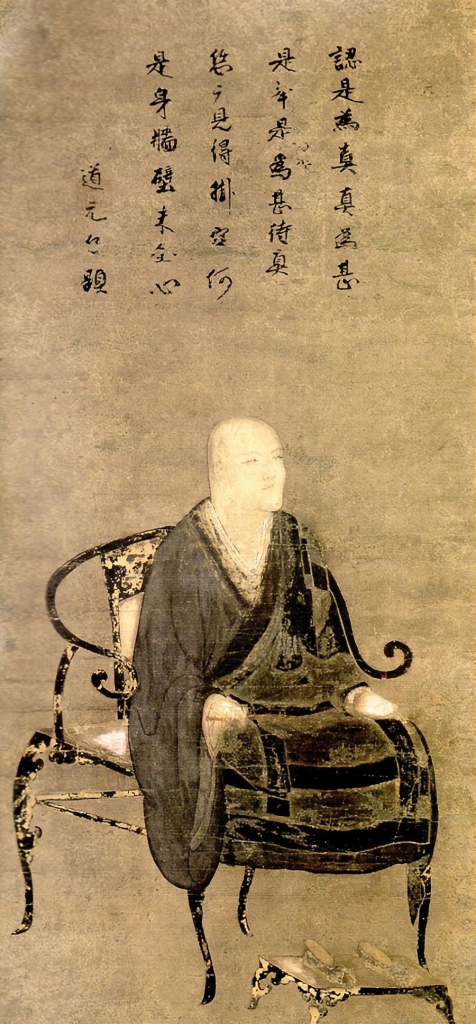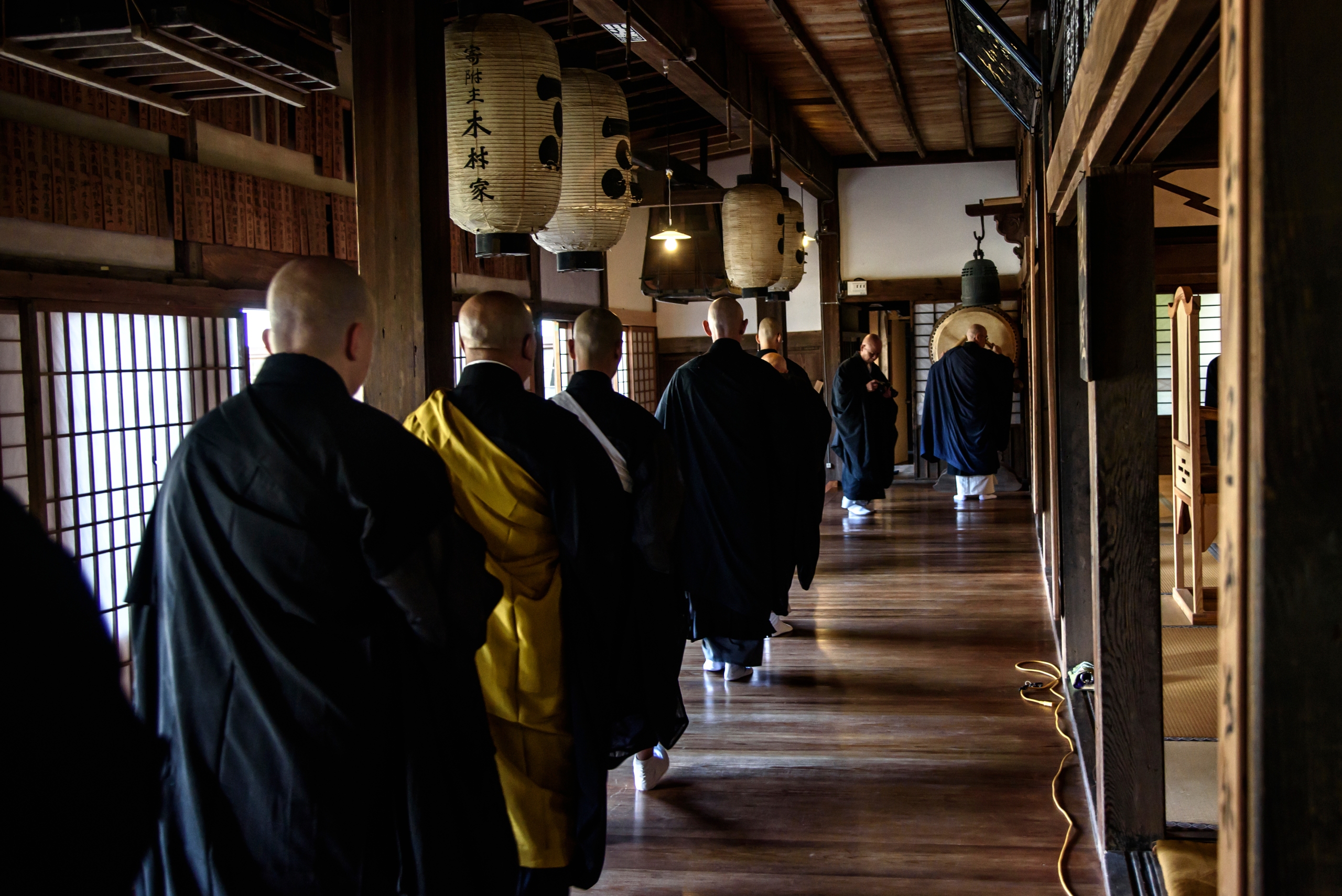The figure of Dōgen Kigen (1200–1253 CE) occupies a critical place in the development of Japanese Buddhism. Though often popularly referred to as the founder of Japanese Zen, this designation simplifies both his position in the broader Buddhist tradition and the complex and long history of transmission of Buddhism across Asia. Rather than founding Japanese Buddhism itself—whose presence dates back several centuries before his time—Dōgen redefined its practice in Japan through the establishment of the Sōtō school of Zen. His approach was shaped by rigorous personal experience, deep philosophical inquiry, and a return to what he understood as the core of the Buddha’s teaching.
Dōgen’s Life and Legacy

Dōgen was born into an aristocratic family in Kyoto in 1200 CE, during a period of political instability and cultural transition in Japan. Orphaned early, he entered monastic life at Mount Hiei, the center of the powerful Tendai school. Dissatisfied with what he saw as doctrinal overgrowth and institutional compromise, Dōgen left in search of a more authentic expression of Buddhist practice.
In 1223 CE, he traveled to Song dynasty China with his teacher Myōzen, seeking the true Dharma. There, he encountered Rujing (1163–1228), a master of the Caodong (Sōtō in Japanese) lineage. Rujing emphasized shikantaza—”just sitting”—a form of meditation centered on silent, non-dual awareness without object or goal. For Dōgen, this marked a turning point. After receiving transmission from Rujing, he returned to Japan in 1227 CE.
Upon his return, Dōgen began teaching a distinct form of Zen that de-emphasized ritual merit-making and scholasticism, promoting instead direct seated meditation as the core of awakening. His school would become known as Sōtō Zen. In his masterwork Shōbōgenzō (Treasury of the True Dharma Eye), a collection of essays and discourses, Dōgen articulated a radical interpretation of time, self, and enlightenment, grounded in practice-realization: the idea that zazen (seated meditation) is not a means to enlightenment but its direct enactment.
The Distinctive Features of Dōgen’s Zen
What distinguishes Dōgen’s Buddhism is his philosophical commitment to the unity of practice and awakening. For Dōgen, enlightenment is not a goal achieved after years of spiritual exertion. Instead, the very act of sitting in meditation—when performed with total attention—is the full expression of Buddha-nature.
This vision contrasts with other schools of Buddhism, particularly the Tendai and Shingon traditions in Japan, which integrated complex rituals, mandalas, esoteric practices, and scholastic commentary. It also differed from Rinzai Zen, another form of Japanese Zen that developed concurrently and placed greater emphasis on kōan (riddle-like cases) study, sudden insight, and often dramatic encounters with teachers.
Sōtō Zen under Dōgen remained austere, emphasizing quiet discipline, rigorous monastic ethics, and the ordinariness of awakening. His insistence that everyday activities—cooking, cleaning, walking—could be arenas for awakening if undertaken with full awareness deeply influenced Japanese monastic culture.
From Lumbini to Eiheiji: The Transmission of Buddhism to Japan
The path of Buddhism from its origins in South Asia to Japan spans centuries and cultures. According to traditional accounts, Siddhartha Gautama—the historical Buddha—was born in Lumbini (present-day Nepal) around the 5th century BCE. His teachings spread throughout India and were institutionalized under the Mauryan emperor Ashoka in the 3rd century BCE.
From India, Buddhism moved northward along trade and pilgrimage routes into Central Asia, reaching China via the Silk Road around the 1st century CE. Over time, it adapted to Chinese thought systems, particularly Daoism and Confucianism, giving rise to schools such as Tiantai, Huayan, and Chan (Zen).
Zen Buddhism, a branch of Chan emphasizing meditation and direct transmission outside of texts, developed during the Tang and Song dynasties. It was from this Chinese milieu that Dōgen drew his inspiration. Japanese Buddhist monks had been traveling to China for centuries, but Dōgen’s journey to Song China was uniquely transformative, importing not just texts or ritual practices but an entire ethos of practice.
Buddhism officially arrived in Japan in the 6th century CE, traditionally dated to 552 CE, through diplomatic exchanges with the Korean kingdom of Baekje. Initially patronized by the imperial family, it gradually adapted to local religious customs, coexisting with native kami beliefs in a process later referred to as shinbutsu shūgō (syncretism of kami and Buddhas).
Pilgrimage Sites Associated with Dōgen

While Dōgen traveled widely and taught in several locations, the primary pilgrimage site associated with his legacy is Eiheiji, or the “Temple of Eternal Peace,” located in present-day Fukui Prefecture. Founded by Dōgen in 1244 CE, Eiheiji became the headquarters of the Sōtō school and remains an active training monastery to this day. Set in a forested valley, the temple complex follows Dōgen’s aesthetic of quiet simplicity and monastic rigor. Visitors can observe daily rituals and, in some cases, participate in short-term training programs.
Another key site is Kenninji in Kyoto, one of the oldest Zen temples in Japan. Though it was not founded by Dōgen himself, it was where he first began teaching after returning from China and served as a base for his early dissemination of Sōtō practice.
Mount Hiei, though more closely associated with the Tendai tradition, is also relevant to Dōgen’s life as the place of his early training and eventual disillusionment. Pilgrims tracing his intellectual evolution often visit this mountain to understand the religious environment he sought to reform.
Dōgen’s significance in Japanese religious history stems not from founding Buddhism in Japan, but from redefining its philosophical and practical core within the Sōtō Zen tradition. His insistence on direct practice, rigorous attention to the present, and the inseparability of daily life from awakening has left a lasting imprint on Japanese monastic culture and global perceptions of Zen. As a pilgrim figure, Dōgen represents the quest not for exotic knowledge, but for clarity in the familiar—an inner journey carried out in silence, in sitting, in breath.





